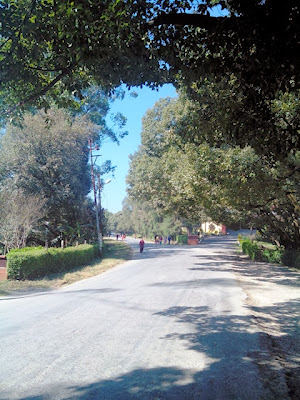From Indian Side - The Kapilavastu Controversy Part IV

When William Caxton Peppe excavated the Piprahwa Stupa in 1898, he had found along with the urns carrying Buddha’s relics, many other objects. I have mentioned about these objects earlier. But let me recollect these here again for quick reference.
The urns besides the Buddha relics, also contained ornaments in gold, gold beads; impression of a woman on gold leaf two inches long, another figure in gold leaf naked ; a large circular piece of rather thicker gold leaf, scrolled on the outside, the impression of an elephant on gold leaf, several pieces impressed with a lion, with trident over his back and the Buddhist cross in front ; several pieces with the impression of the Buddhist cross; one piece of solid gold 3/4 inches by 1/2 by 1/3 ; quantities of stars or flowers, both in silver and gold, with six and eight petals. Pearls of sizes, many welded together in sets of two, three, and four. Also quantities of flowers or stars, leaves serrated and veined, Buddhist tridents, pyramids, pierced and drilled beads of sizes and other shapes cut in white and red cornelian, amethyst, topaz, garnets, coral, inlaid stones, and shells. There is one bird cut in red cornelian and one bird in metal. We have seen earlier that Peppe had donated the urns with the relics to Indian Museum at Kolkata and these can be seen there even today. No one knew about the whereabouts or whatever happened to other archeological treasures in the Urns till one day, some of them just resurfaced in London.























